The living fossil Ginkgo biloba tree is in the spotlight this time of year. Its display of yellow leaves is often most noticed with a dramatic final leaf drop upon a hard frost, inspiring a flurry of Instagram posts and selfies each year!
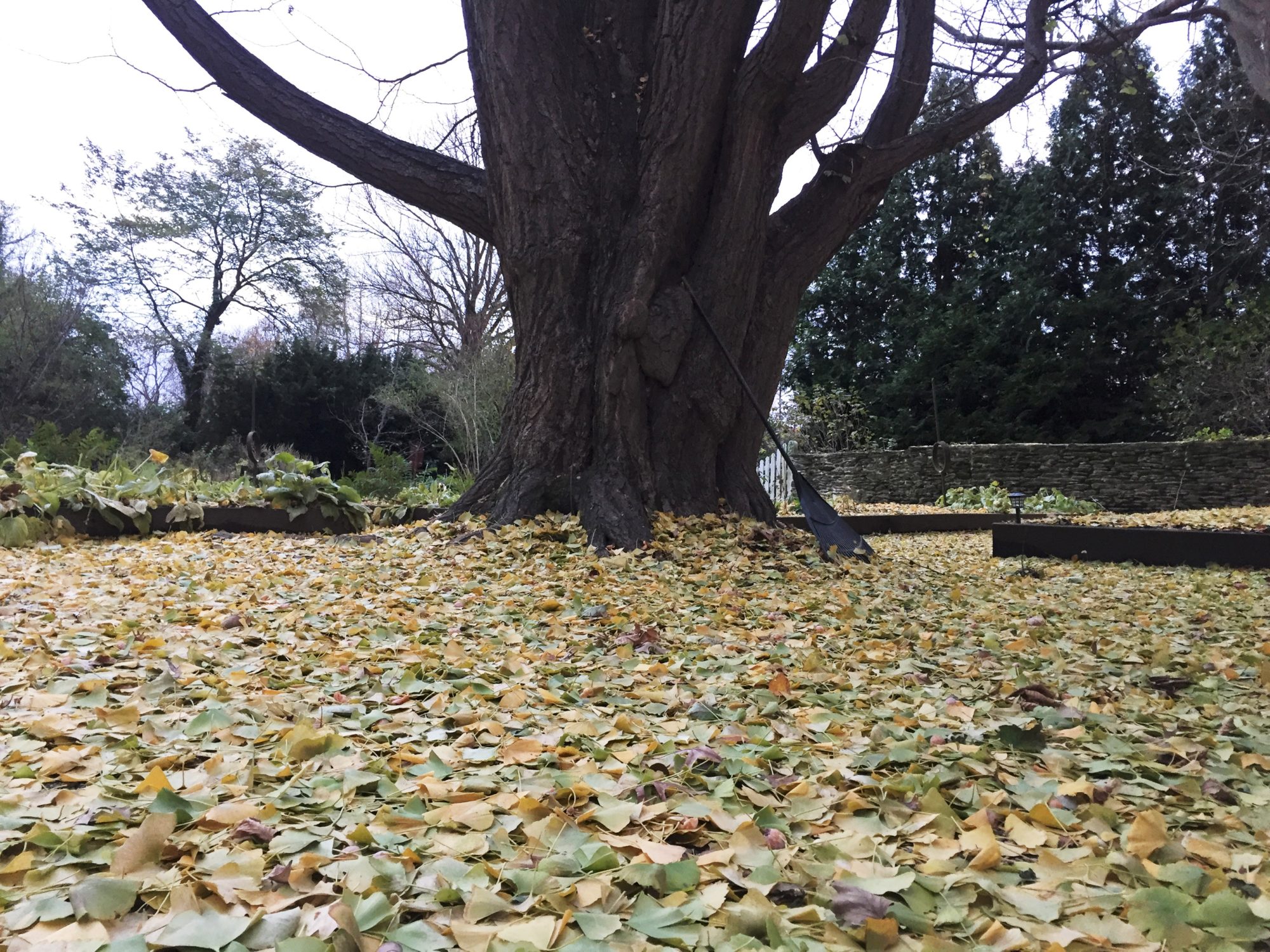
Loved and hated by many, the pungent “berries” that drop from female ginkgo actually contain edible “nuts”, which feature a soft savory center. These “nuts” have a long history of being foraged in Philadelphia, which continues to this day. We have put “nuts” and “berries” in quotations because this plant is more closely related to ferns than any fruit or nut tree of today, and the “fruit” is technically more of a naked seed than anything else.
An appropriate post to follow Transgender Awareness Week, the 2nd week of November, Ginkgo biloba may be both one of the oldest tree species on planet earth today while also being one of the oldest transgender organisms on the planet with the documented ability to change and express more than one gender.
POP has held ginkgo harvests and nut roasts for the past few years, but this year we decided to empower you with information, some tools and a fall outdoor activity to pursue with your kin and community. Read on to see!
Prepare your own ginkgo nuts
Please review our full disclaimer at the end of this article before consuming any part of the ginkgo tree!
Ginkgo has a long history of being eaten and used for various medicinal qualities, which continues today. Leaves and seeds are easily foraged and processed on one’s own, but not without caution.
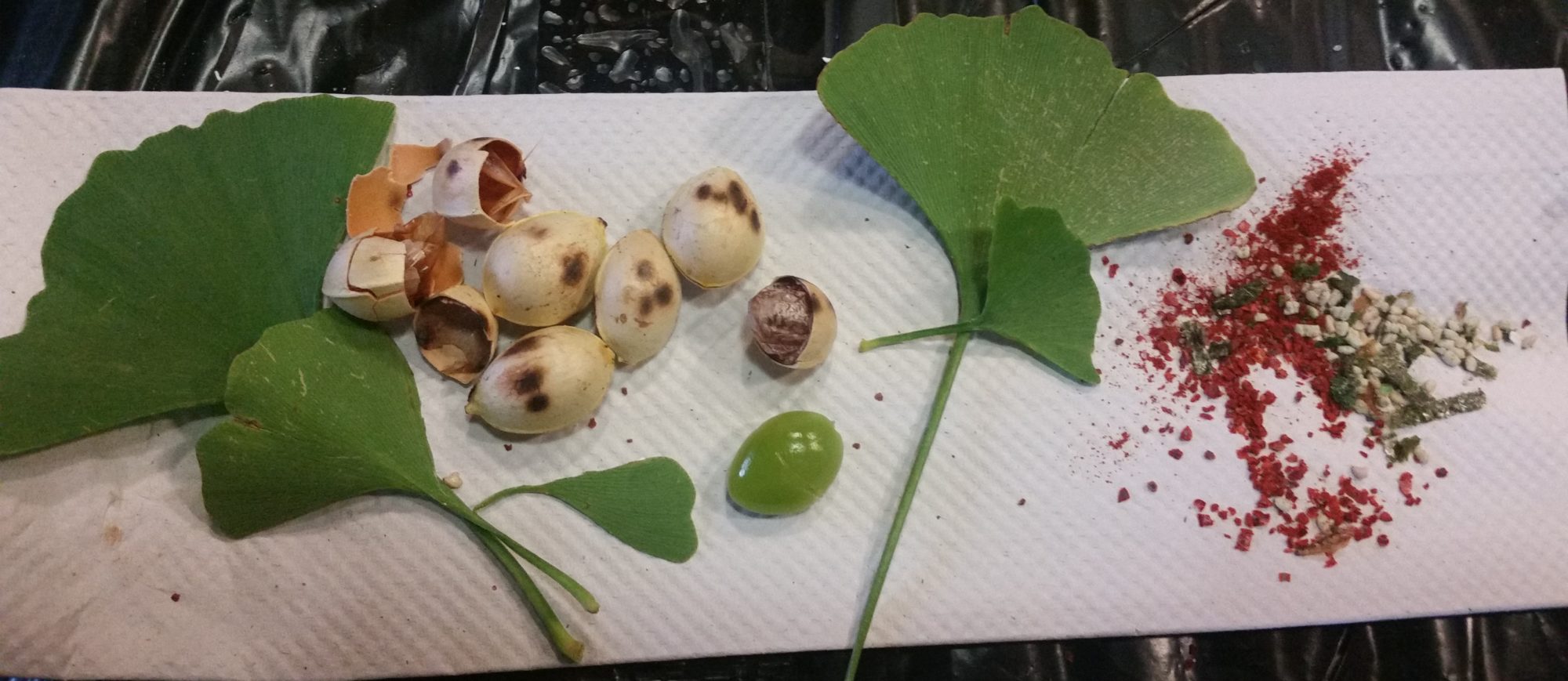
Check out these videos showing how easy it is to forage and prepare ginkgo seeds:
Ginkgo seed collecting and preparation by a Japanese forager
Ginkgo seed processing by a Rockland, NY area forager
Blog by Kimmy in Georgetown, Penang, Malaysia
How to Prepare Ginkgo Nuts
Blog by Taste Hong Kong
Ingredient: Ginkgo Nuts
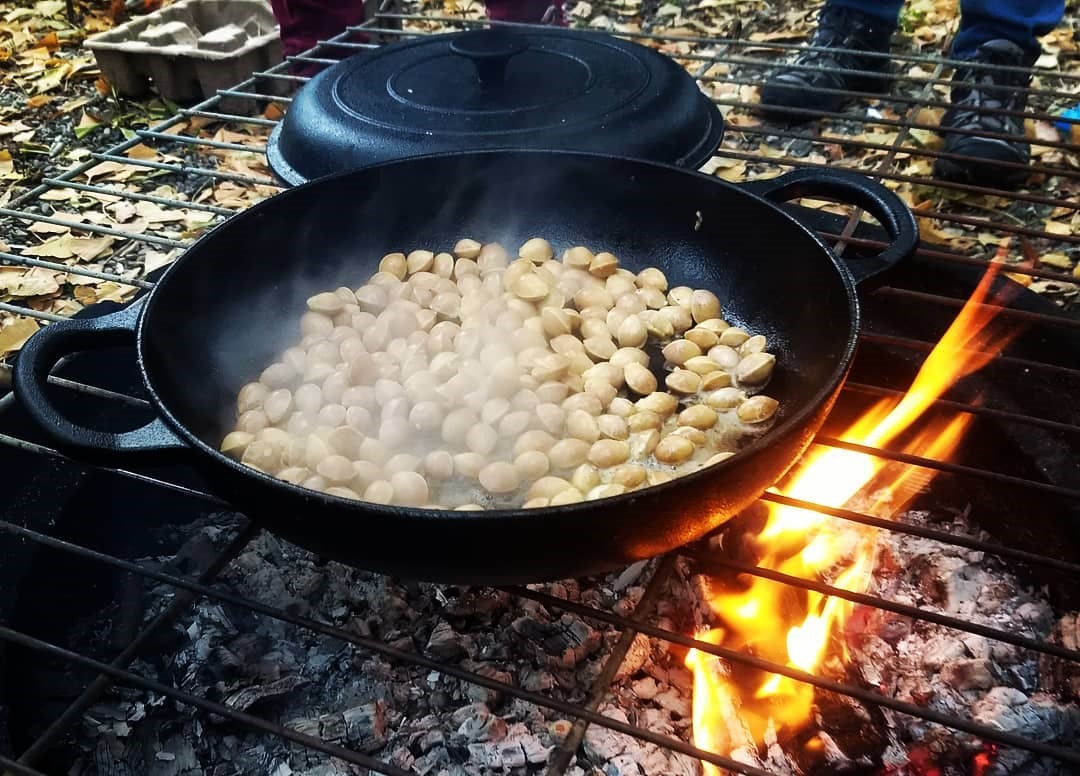
Especially with ginkgoes, it is advised to not eat more than a few nuts and to do your homework before consuming nuts or leaves as a supplement, as ginkgo can cause stomach upset, allergic skin reactions, headache, increased risk of bleeding, may be unsafe during pregnancy, and may interact with certain medications including blood thinners or become toxic when too many are eaten. With these considerable caveats, ginkgo is relatively safe and common to eat and use. Ginkgo leaves are widely used as a supplement to help with various conditions and enhancing cognitive function, while the seeds are enjoyed as a delicacy when eaten in small amounts and used for similar properties. The pungent flesh may irritate skin, and gloves are commonly used when handling and cleaning foraged seeds.
The Philadelphia Orchard Project stresses that you should not consume parts of any wild edible plants, herbs, weeds, trees, or bushes until you have verified with your health professional that they are safe for you. As with any new foods that you wish to try, it is best to introduce them slowly into your diet in small amounts. Read the Philadelphia Orchard Project Full Disclaimer here
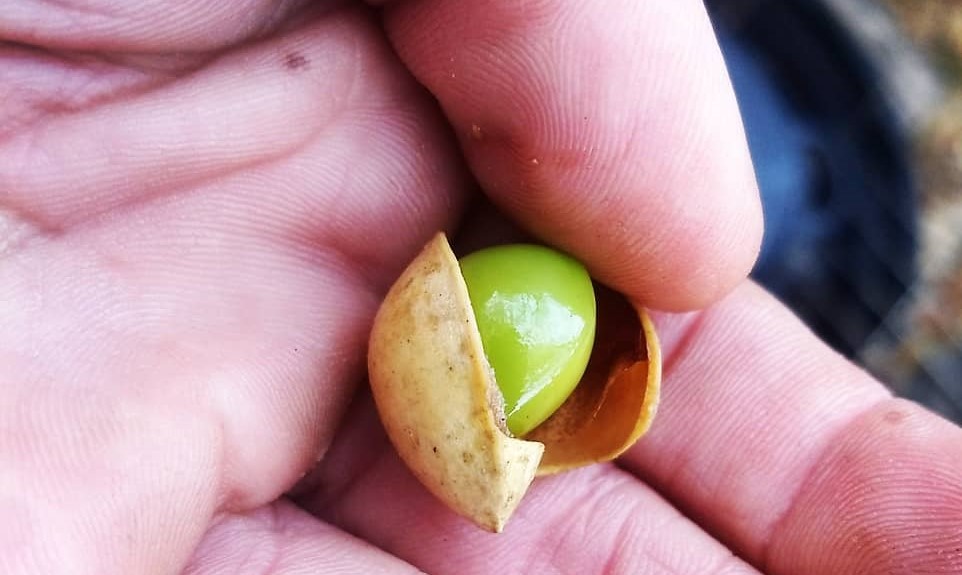
Ginkgo seeds are harvested after dropping in late fall and can be roasted, boiled, and frozen for later use. Ginkgo leaves are most often collected when they are mostly yellow, but still contain some green, dried for later use or tinctured immediately.
Philadelphia Ginkgo Maps!
Scout and harvest your own ginkgo trees at the Woodlands or around Philadelphia with these maps:
Map of Ginkgoes at the Woodlands (click here for link)
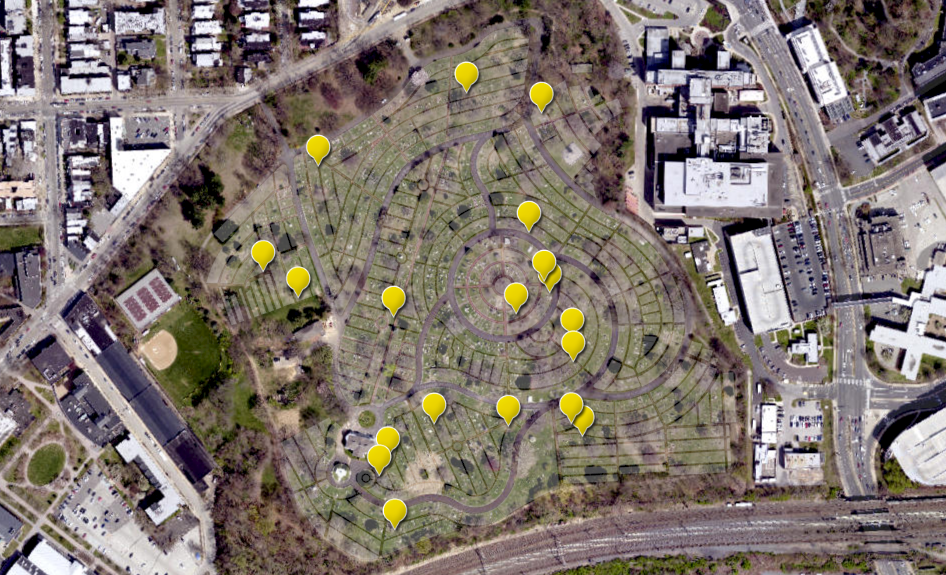
Map of Ginkgoes in the Philadelphia Area (click here for link)
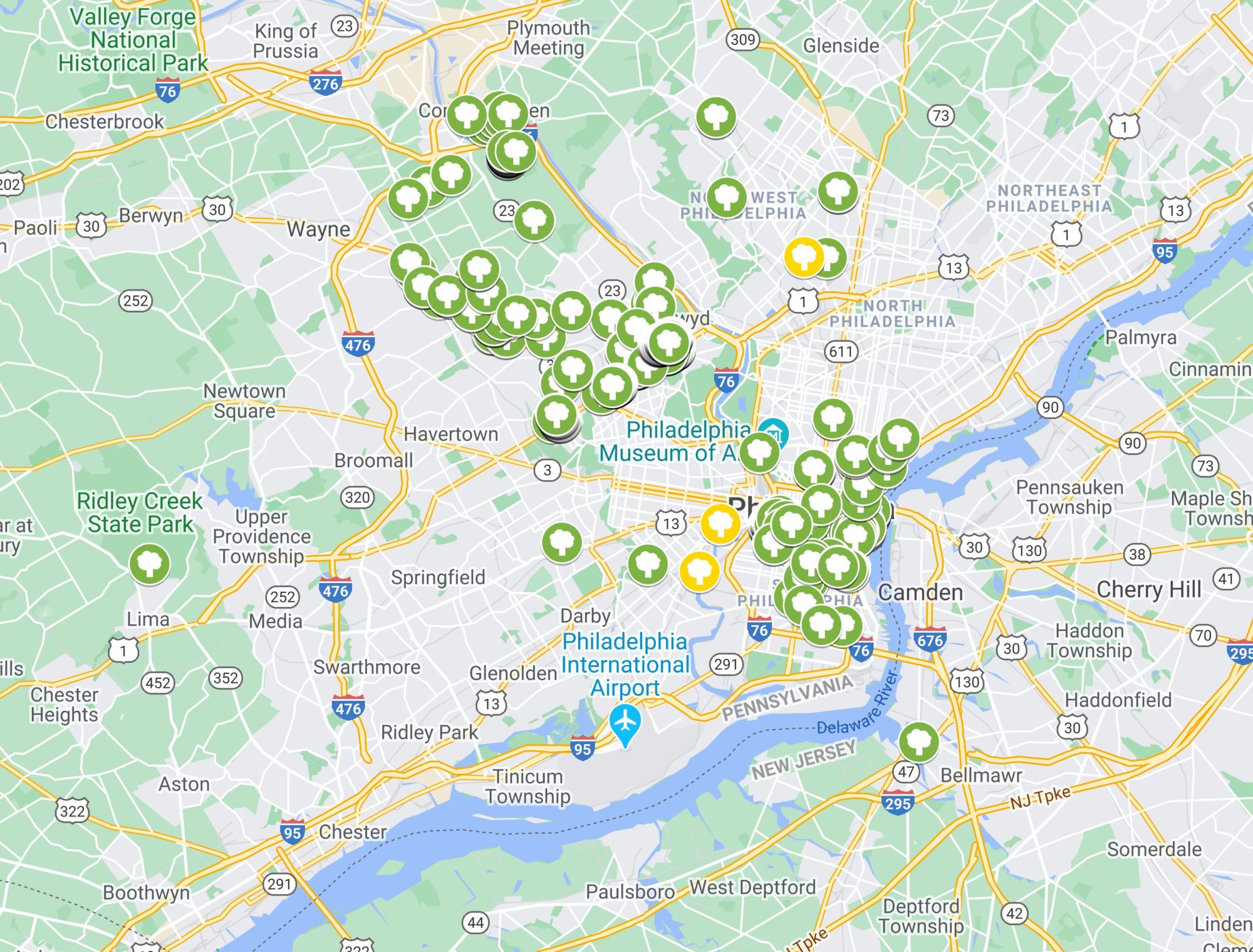
This is a map of Ginkgo tree locations created from data provided by the Philadelphia Tree Inventory. Ginkgoes are a tasty and abundant Fall treat! Philadelphia Orchard Project does not guarantee the accuracy of this information, which is over 10 years old and the location of trees on this map does not necessarily indicate permission to collect nuts. Ask for permission for trees located on private property or street trees in front of individual properties. Make sure you have correctly identified what you are harvesting and practice safe food handling. Inclusion on this map does not guarantee that a ginkgo tree is still at this location and this map does not currently indicate whether a tree is female or male. Only female ginkgo trees (and sometimes males) produce seeds. Many ginkgoes exist in this area, which may not be designated on this map. Please send additional coordinates to info@phillyorchards.org or add tree locations yourself. Map users may also edit the notes of individual trees to indicate they are male or female. This map was created with assistance from Corey Wills, Watershed Resource Analyst at The Water Center at Penn.
Ginkgo History and ties to Historic Philadelphia
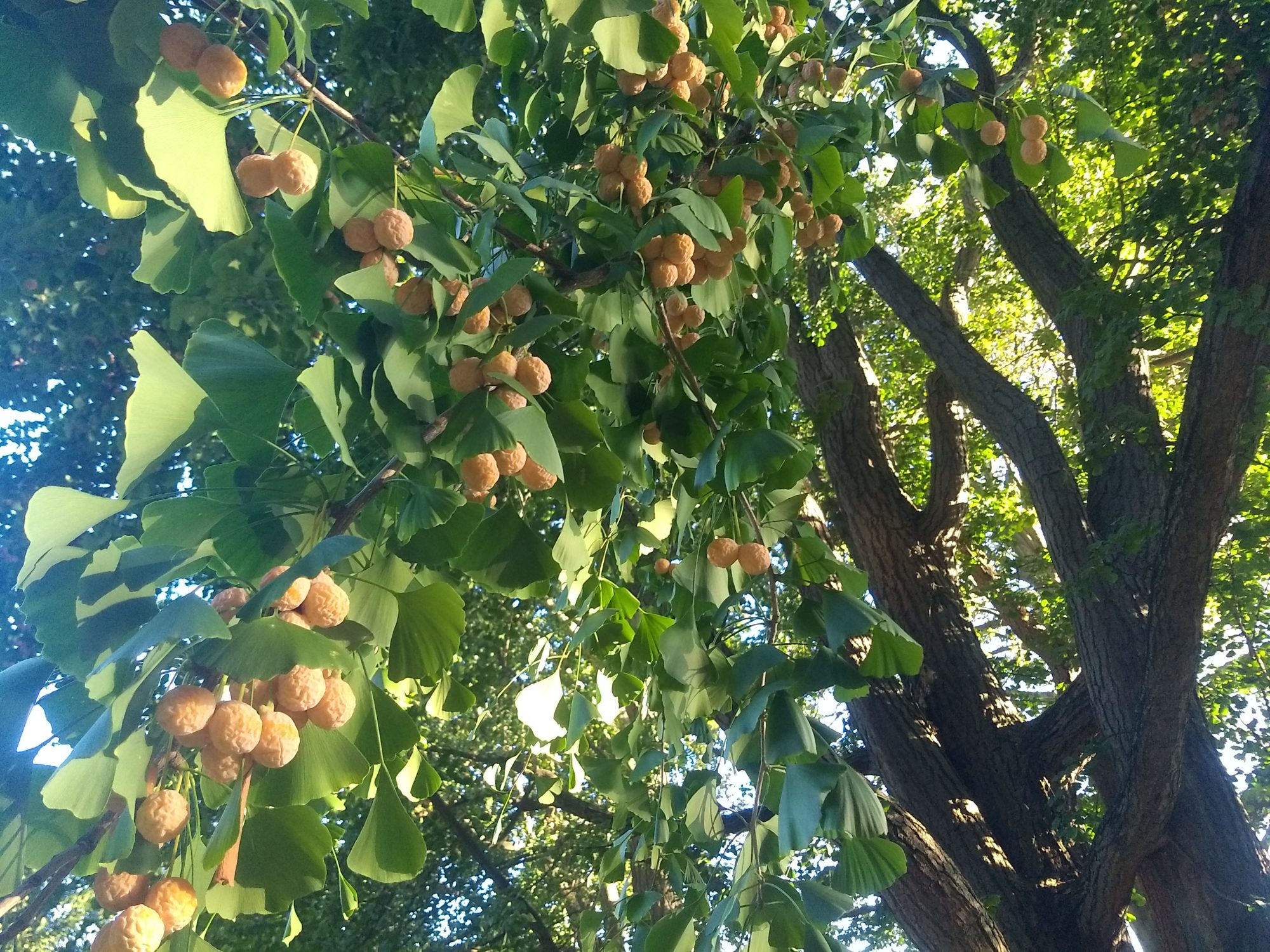
HIGHLY recommended Ginkgo History Podcast by Generation Anthropocene: Stories and conversations about planetary change supported by Stanford Earth & Worldview Stanford
Starting with fossil records in the Triassic period 200 million years ago, a global distribution of many ginkgo species existed for about 100 million years is described followed by a global decline in ginkgo and the ultimate human conservation of one species, Ginkgo biloba, in China, which was planted and revered in Temples. Ginkgo biloba is first recorded as a nut tree about 1,000 years ago, spreading to Japan and Korea in the 1400’s and 1500’s, ultimately to Europe in the early 1700’s with the oldest living European specimens dating to circa 1750.
William Hamilton of The Woodlands brought the ginkgo to North America and shared them
In 1785, William Hamilton brought 3 Ginkgo trees to the US, gifting one to John Bartram, which still lives today at Bartram’s Garden. These were the first Ginkgoes recorded coming to the North America. The two Ginkgoes Hamilton planted at the Woodlands are no longer there, but today The Woodlands has more than 20 specimens on the grounds.
The oldest living ginkgo in North America is at Bartram’s Garden
Ginkgoes were brought to Monticello
In 1806, William Hamilton wrote to Thomas Jefferson that he would send three ginkgo trees that produce “good eatable nuts”
The oldest known North American female ginkgo is at Grumblethorpe Historic House & Gardens
Circa 1830, Charles Wister Sr. planted a female ginkgo at Grumblethorpe, which may be the oldest known living female ginkgo in the US
For the past few hundred years, ginkgo has been widely used as a street tree as seen in cities like New York and Philadelphia
While not agreed upon by all, ginkgo is a widely planted urban street tree, tolerant of urban stressors including poor soils, pollution, salt, drought, fire and shade from buildings
6 Ginkgos survive the atomic bomb in Hiroshima
August 6th 1945, Ginkgo biloba is among the only living species to survive inside the epicenter of the Hiroshima atomic bombing.
The oldest living ginkgo tree on Earth is reported to be 3,000+ years old in Juxian, Rizhao, Shandong, China
Many historic ginkgoes are revered and visited, like the Millenium Ginkgo Biloba featured by the Looking China Youth Film Project in “Under the Ginkgo Tree” 2019, a story about a woman that sells ribbons offered as prayers around this ancient tree.
“Gingko Biloba”
This tree’s leaf from the East
Which has been entrusted to my garden,
Gives a taste of secret meaning,
Such as the Wise Ones construct.
Is it an essence of living,
That divides itself?
Are you two, which you choose,
That mankind knows as one?
Such questions to answer,
I found the full understanding to.
Do you not feel it in my songs,
That I am both one and a twin.
~ Poem by Johann Wolfgang von Goethe 1815
This English translation by Michael Muehlbauer
(other translations)
For more information about Ginkgo biloba, click the links above in the article and check out the following resources:
POP Ginkgo Info Sheet
Ginkgo Watch 2020 at The Woodlands
An evolutionary and cultural biography of ginkgo – Crane PR Plants, People, Planet
Lecture: Ginkgo: an evolutionary and cultural biography by Prof. Crane
Ginkgo: The Tree that Time Forgot – Book by Peter Crane
The Ginkgo Pages – by Cor Kwant: a website created from a retired high school teacher’s fascination and respect for Ginkgo
Disclaimer
The Philadelphia Orchard Project stresses that you should not consume parts of any wild edible plants, herbs, weeds, trees, or bushes until you have verified with your health professional that they are safe for you. As with any new foods that you wish to try, it is best to introduce them slowly into your diet in small amounts.
The information presented on this website is for informational, reference, and educational purposes only and should not be interpreted as a substitute for diagnosis and treatment by a health care professional. Always consult a health care professional or medical doctor when suffering from any health ailment, disease, illness, or injury, or before attempting any traditional or folk remedies. Keep all plants away from children. As with any natural product, they can be toxic if misused.
To the best of our knowledge, the information contained herein is accurate and we have endeavored to provide sources for any borrowed material. Any testimonials on this web site are based on individual results and do not constitute a warranty of safety or guarantee that you will achieve the same results.
Neither the Philadelphia Orchard Project nor its employees, volunteers, or website contributors may be held liable or responsible for any allergy, illness, or injurious effect that any person or animal may suffer as a result of reliance on the information contained on this website nor as a result of the ingestion or use of any of the plants mentioned herein.
SAFETY PRECAUTION: While there are many plants which are helpful and beneficial for us to partner with, there are plants that are dangerous for us to consume or even to touch. It’s important that we take the necessary precautions – in a city space: avoid harvesting from places with pollution or runoff; avoid harvesting endangered plants; understand there are some plants used medicinally only in small doses vs some that can be eaten with relatively little concern. The most important thing is that you trust your body, go slow with incorporating any new plants into your diet!
This POP Blog Post was written by Orchard Director Michael Muehlbauer.
SUPPORT US! If you found this entry useful, informative, or inspiring, please consider a donation of any size to help POP in planting and supporting community orchards in Philadelphia: phillyorchards.org/donate.